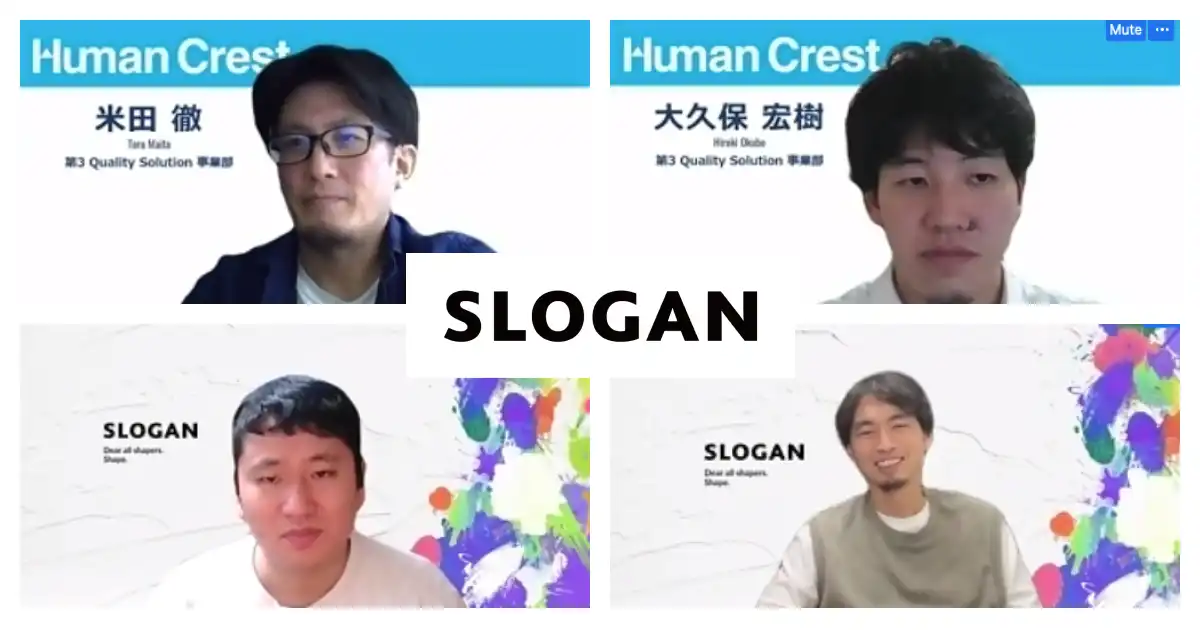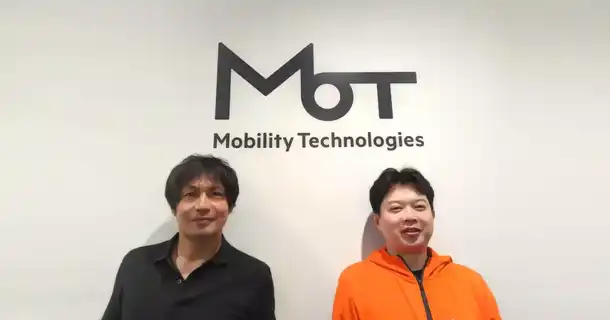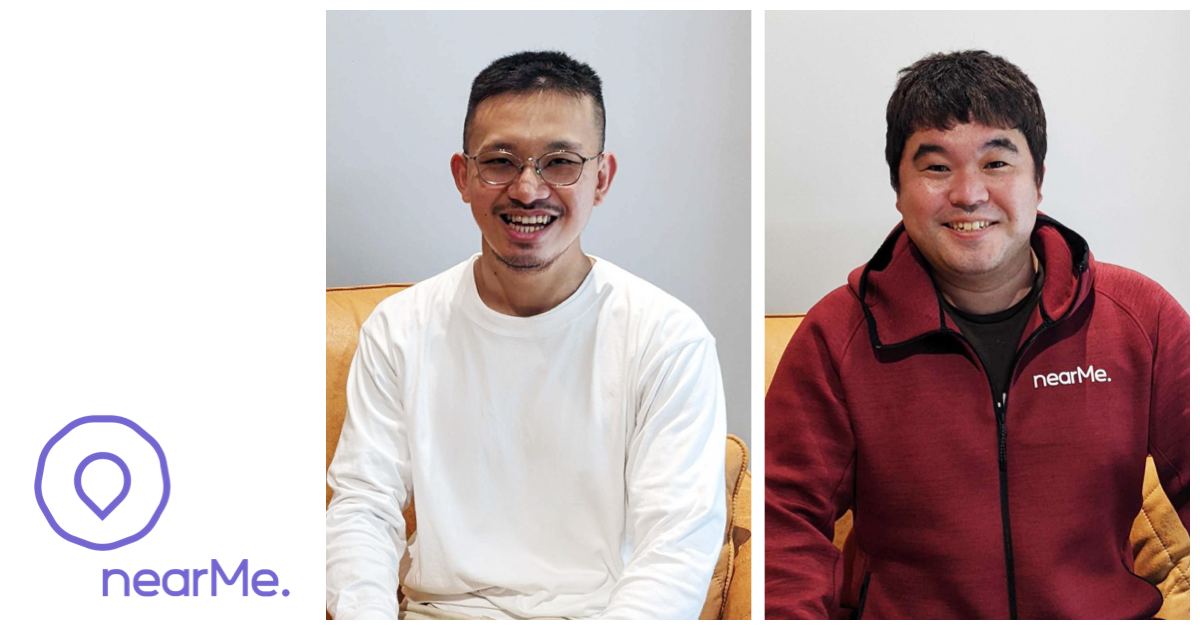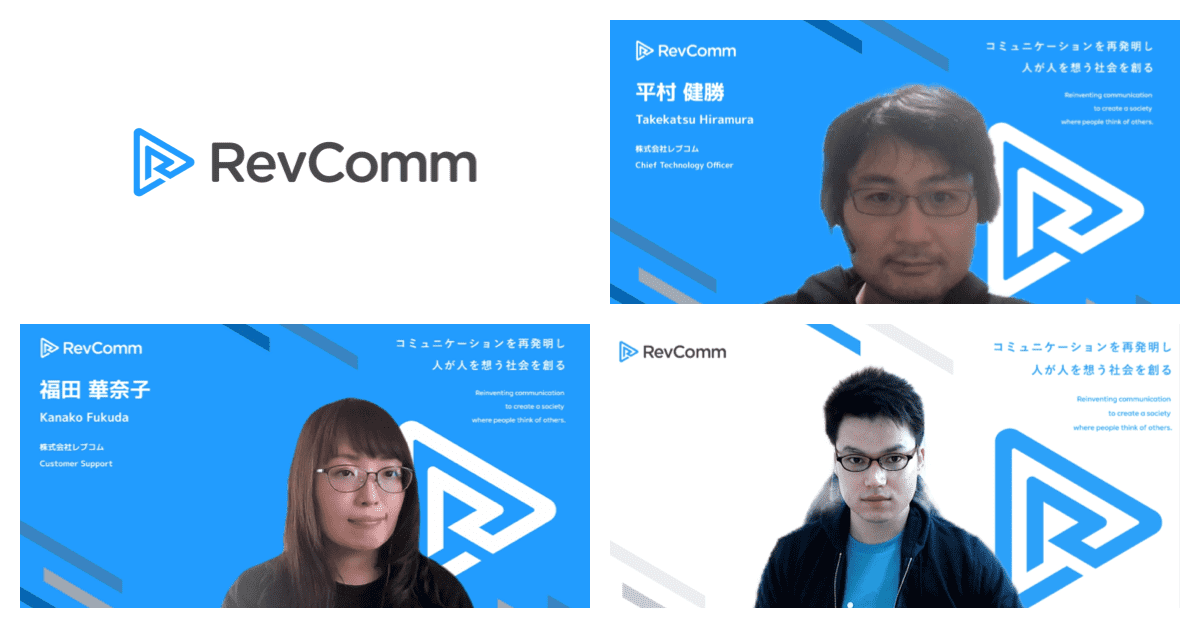
The Benefits of Automating Tests With a Business Partner. From Setting up a QA Team to Managing Tests.
Mr. Kosuke Watanabe and Mr. Hiroyoshi Ishii of Slogan, Inc. and Mr. Toru Maita and Mr. Hiroki Okubo of Human Crest, Inc.


Since the beginning of the COVID-19 pandemic, companies have recommended remote work, and human resource services are changing. Many companies carry out HR activities completely remotely. These include employment seminars, recruitment interviews, job offer ceremonies, and hiring procedures. In an industry where demands are changing rapidly, Slogan, Inc. is stepping up the quality assurance of its human resource services, including Goodfind.
In December 2021, the company partnered with Human Crest, a third-party verification company, and launched a QA team. They have been working on automating regression tests.
In this interview, we spoke to Mr. Kosuke Watanabe and Mr. Hiroyoshi Ishii of Slogan, Inc. and Mr. Toru Maita and Mr. Hiroki Okubo of Human Crest, Inc. about the process and benefits of working on test automation with a business partner using Autify.
Establishing a QA team to manage software rot
First, please introduce yourselves.
Kosuke at Slogan: I’m Kosuke Watanabe, the department manager* of the Design & Technology Department at Slogan, Inc (*at the time of the interview). I was responsible for implementing Autify with Human Crest’s help.
Hiroyoshi at Slogan: I’m Hiroyoshi Ishii, a member of the development team at Slogan, Inc. I’m responsible for tasks related to testing with Autify, which I do in collaboration with the people at Human Crest.
Toru at Human Crest: I’m Toru Maita, a member of the 3rd Quality Solution Division at Human Crest. We are a third-party verification company offering support to agile development companies with their software testing, QA, and shift-left efforts. We’ve supported Slogan with establishing a QA team and beyond.
Hiroki at Human Crest: I’m Hiroki Okubo, a QA engineer of the 3rd Quality Solution Division at Human Crest. I am responsible for manually testing Slogan’s products and creating automated test scenarios using Autify.
What does Slogan do?
Kosuke at Slogan: We offer human resource services such as Goodfind, an exclusive recruitment platform that mainly helps graduates find jobs. We also run FastGrow, a business media platform for young innovative professionals. Other subsidiaries include TeamUp, Inc., which provides TeamUp, a 1-on-1 meeting tool. Our subsidiaries also use Autify for test automation.
What kind of QA challenges did you face before implementing Autify?
Kosuke at Slogan: The main issue was that the system was getting old – changing one section would cause unexpected side effects. This meant that we had to check extensively before every release. Although we tried to work on this issue by assigning dedicated staff for testing, it didn’t go well because they weren’t specialized in testing. QA wasn’t my expertise, either.
We considered automating E2E testing, but engineers would have to allocate a lot of time on it if we were to do it ourselves. That’s why we were searching for a way to automate E2E testing that wouldn’t take up engineering resources.
Is that when you contacted Human Crest?
Kosuke at Slogan: Not quite. Someone at FastGrow had introduced me to Autify, so we decided to implement it first. After that, we asked Human Crest to set up Autify. We said, “Can you use your expertise as QA professionals and do it for us?” That was the gateway to automation.
The deciding factor was no-code automation
How often do you release?
Kosuke at Slogan: It’s up to each product team, but we generally release about once or twice a week.
Did you consider other tools or services before implementing Autify?
Kosuke at Slogan: No. When I first tried Autify, I thought, “you don’t have to be an engineer to set this up.” At the very least, Autify would help us get further than where we were before, so we decided to go ahead without comparing it with other tools.
It sounds like the deciding factor was that you don’t have to be an engineer to use Autify. How did you implement Autify after contacting Human Crest?
Kosuke at Slogan: Initially, we tried to set up Autify ourselves, but with all the other tasks we needed to get done, it was hard to find the time. It took us 2-3 months to start setting up scenarios.
When we asked Human Crest to build a QA system, we also requested that they use Autify to create automated tests.
At Human Crest, did you have experience using Autify for QA? What were your first impressions of our platform?
Toru at Human Crest: Yes, I had made test scenarios using the trial version of Autify for another client about a year prior. Right from the get-go, I thought Autify was incredibly easy to use. We used to use our own automation services and received training on writing test code and scripts, but Autify’s concept was completely different. That’s how easy it was, and I was impressed.
I’d never actually used the platform, but I could tell that Autify would be something we could use, so when the people at Slogan asked us to use it, we just said, “sure!”
Ease of use and maintenance are on another level
**How did it go when you began making scenarios?
Toru at Human Crest: We wanted to use Autify all the way from building tests to maintaining them. Before we started designing test cases, we checked with the people at Slogan which direction they wanted to take this project – which part of the product we would look at. With this basic guideline, we began making a list of scenarios based on the nature of each product.
How does building tests differ when you have Autify compared to when you don’t?
Toru at Human Crest: With other tools, you often get errors because of environment dependency issues, but those errors rarely occur on Autify. Building tests is effortless. Another thing is that it’s easy to maintain when specifications change.
Automation goes smoothly because we know it won’t burden the QA staff. With other tools, for example, you have to check if the scenario works and fix it if it gets stuck. With Autify, we hardly ever have to make those minor adjustments, so we can keep moving forward.
Kosuke at Slogan: When we asked Human Crest to set up Autify, they were able to use it right away, so we didn’t have to do much preparation for them. If we had picked another platform, we would have had to prepare documents explaining how to use it before we could begin working on QA. Autify allowed us to start with minimal effort.
It was great that we were able to set up automated tests without hardly using the product development team’s resources. For a company that can’t allocate much resources to QA, I think this was a benefit.
Test new features manually before applying them in automated tests
Some companies manage to implement a platform but don’t have the time to create tests. It sounds like having a business partner like Human Crest helped the process go smoothly. How did you go about setting things up?
Hiroki at Human Crest: We wanted to automate regression testing, so we experimented with Autify, and considered how much we would use it for each product. After that, it’s just a matter of launching Autify and capturing actions. We relied on Autify’s support when there were issues we couldn’t solve on our own.
You’re in the first phase, where you’re creating regression tests and running them automatically. How are you using it? For example, when do you add new tests?
Hiroki at Human Crest: We auto-run regression tests once daily on the browser version, and once weekly on the smartphone version. If we fix one of our main features, we manually test it to ensure it works correctly. If it’s released to the production environment without issues, we reflect the manual test to the automated test.
Although we aren’t always notified of minor fixes, we do get images comparing the current and previous test execution. If we spot differences, we check with engineers. Then, we update only that portion of the automated test scenario.
Are you able to communicate with engineers smoothly?
Hiroyoshi at Slogan: Yes. We use Google Spaces to communicate. We respond quickly to mentions, so communication is not a problem.
Autify notifications are compatible with Slack, but we don’t support Google Spaces…
Kosuke at Slogan: Unfortunately, yes. Few tools send notifications to Google Spaces, so we’ve begun creating our own integration solutions.
Hiroki at Human Crest: We’ve set up Autify so that notifications are sent to our Slack account. If there are any errors, we share them with Slogan’s Google Spaces.
It sounds like it would make communication smoother if you could integrate Autify with Google Spaces and you received notifications there. We will consider supporting Google Spaces integration.
Kosuke at Slogan: I appreciate that.
Managing test devices had become an issue. Upgrading plans solved it.
You upgraded your Autify plan from Small to Advanced Mobile, which allows you to test on real mobile devices. What made you change your plan?
Kosuke at Slogan: As remote work became more mainstream, it became challenging to manage all the devices we used for smartphone testing. We couldn’t give each staff a test device either.
That’s why we wanted to upgrade our plan right from the beginning. However, we weren’t sure how helpful Autify would be, so we decided to start small. Once we started using Autify with Human Crest, we had a good idea that we could make the most of it, so we went ahead and began using it for mobile testing as well.
You used to use real devices for mobile testing, right?
Kosuke at Slogan: We also used developer tools that emulate real devices, but we wanted to use real devices for final checks. The problem is that test accuracy depends on whether the team has someone who has a device, and whether the product team has enough members. It’s great that we can test on real devices on the cloud, wherever we are.
What are some Autify features that you find particularly useful?
Hiroki at Human Crest: We have several scenarios that require you to log in, so the Step Group feature is invaluable.
Thank you very much. We will add new functionality to our Step Group feature, so stay tuned!
“We want to ingrain testing in our company culture.”
What changes did you see after implementing Autify?
Kosuke at Slogan: Having set up a QA team with Human Crest, the most common internal feedback was that having a dedicated person for testing alleviates stress. Even if we miss something, it will be picked up. I’ve also heard some of our staff say, “professional testers sure know what they’re doing!” Previously, we would make test items ourselves, but having professionals look at them has improved accuracy.
In addition to setting up Autify, we told Human Crest we wanted to ingrain testing into our company culture. One of the most significant achievements is that we’ve built a foundation that continually tests.
Has awareness changed within your company?
Kosuke at Slogan: I think it has changed faster than we had expected. The development team tells us about releases more than they used to.
From Human Crest’s perspective, what changes did Autify bring about?
Toru at Human Crest: Autify’s ease of use is something I appreciate every day. Especially when I build tests and something’s not quite right, I love how easy it is to change course. This project has always been done remotely, and we hold daily meetings where we share information with people at Slogan, which has helped move things along.
You mentioned earlier that one of the challenges before implementing Autify was that when you fix one part, there can be unexpected side effects. Has this issue been resolved through Autify and Human Crest?
Kosuke at Slogan: We’re not worried about it anymore. Of course, it could still happen in areas beyond the scope of our tests, so we haven’t completely resolved the issue. However, it’s a massive relief that we now test the central part of our service. We haven’t measured the effects, but the fact that we can use Autify without taking up the engineering team’s resources has been hugely beneficial.
Optimize services based on how demands change
What’s next for both of your businesses?
Kosuke at Slogan: The graduate recruitment market is changing every year. Especially in the past two years, there has been a shift to remote work, so our services will likely become suboptimal at one point or another. We will have to make significant changes to the product/service, and the system will need to be rebuilt. Thanks to Autify, we now have a solid foundation that will empower us to start something new.
The company structure changed in June, and I had to leave the QA team. We had made a template for our QA process over the six months leading up to that, so I was able to hand the team over with confidence. I hope the new members will work on QA and keep making improvements.
Toru at Human Crest: QA team is up and running, but I would like to help them feel more at ease so that development can proceed smoothly. Right now, we run E2E tests automatically and manually, but I would like to shift-left API testing, and give feedback on specifications.
Since Autify is so easy to use, I think there’s more that we can try. I hope to utilize more features and keep improving Slogan’s QA processes.
Finally, do you have any announcements?
Toru at Human Crest: Human Crest has around 170 staff, and we tailor our services to each company’s circumstances. We provide services like setting up QA teams, so if you have any challenges related to QA, please reach out.
Recruitment page of Human Crest Group
Kosuke at Slogan: Last November, our company was listed on the Tokyo Stock Exchange Mothers (now Growth), and we are currently planting the seeds for business expansion. Although we mainly offer human resource services, we will expand our businesses to provide more services centering around people. We are planning on creating new products and services in the future.
If you are interested in human resources or want to make something new that relates to people, please consider joining us. There are a variety of service creation and development positions available. We look forward to hearing from you.
Thank you very much!
(Interviewer: Ryo Chikazawa, CEO, Autify Inc.)










